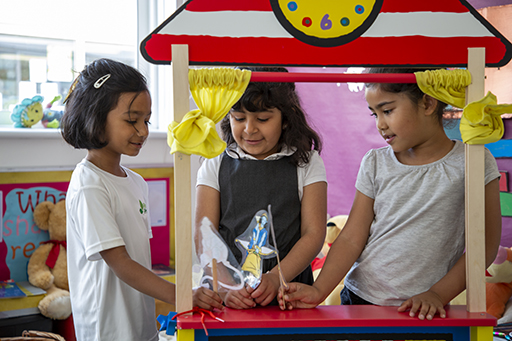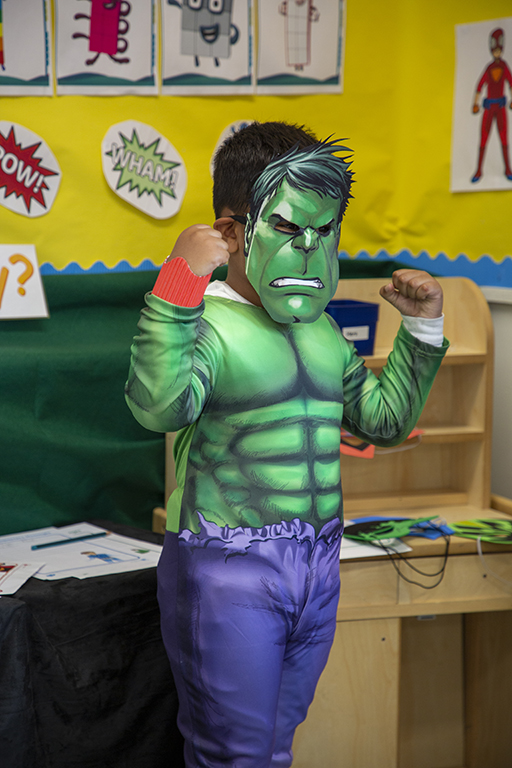3 Exploring possibilities through narrative play
In her seminal work, Susan Engle (2005) proposed that children use narrative play and stories to understand the world of ‘what is’ and the world of ‘what if’. In children’s play, the expression of narrative is embodied; they enact a scenario, take on roles and characters, and everyday objects become something entirely different. Engle argues that through both symbolic play and stories, young children begin to differentiate between everyday reality and pretend or fantasy worlds.

In re-enacting scenarios from their own lived experience, such as a visit to the doctors, young children develop understanding of events going on around them. Opportunities to playfully retell stories that have been read to them or they have experienced on screen allow children to explore the borderlands of reality and make-believe. Narrative play, whether symbolic role play or fantasy play, helps the young develop understandings about what is plausible, what is probable or improbable, and what is pure fantasy.
Additionally, access to story props or story sacks (a large cloth bag with a children’s book and supporting materials) to accompany narratives supports young children to retell and adapt or reimagine the stories they hear. The benefits of this play are multiple; it stimulates language by encouraging children to try out new vocabulary and new language functions and forms. Such play also offers an invaluable opportunity to understand narrative structure, through which children organise their world.

Research with 7–11-year-olds in two London schools (Potter and Cowen, 2020) illustrates how the school playground is a ‘rich and dynamic meaning-makerspace’. In this space, children creatively and collaboratively draw on multiple resources, including their own lived experience, folklore, video games and media culture in dynamic and spontaneous playworlds. For example, the researchers observed a group of children re-enacting the drama of the 2018 World Cup and another group playing at ‘being YouTubers’.
The seminal writings of Hardy (1977), Bruner (1990), Rosen (1988) and Engle (2005), alongside contemporary research, demonstrate that both adults and children organise their thinking, and interpret, analyse and make sense of the world though narrative. Through stories, you construct and reconstruct your identity and develop understandings of others. So, providing children with opportunities to engage with a wide range of stories can help them to develop broad perspectives and understand that there are multiple truths, something you will look at in more detail next.
